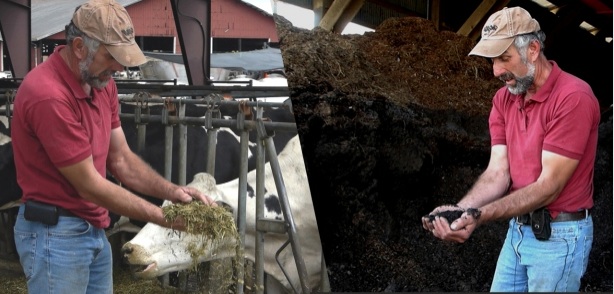
A renewable energy venture in the Puget Sound area of Washington State virtually turns manure into money.
In 2003, the Tulalip Tribes formed a partnership with local dairy farmers to pipe their cow¹s waste to an anaerobic digester that converts it to electricity.
The digester is owned by Tulalip and managed by
Qualco Energy, a nonprofit joint venture between the
4,100-member
Tulalip Tribes, the Northwest Chinook Recovery and the
Sno/Sky Agricultural Alliance. On a peninsula where the
Skykomish and Snoqualmie rivers converge to form the Snohomish
River, Qualco’s digester operates on land that formerly housed a
60-year-old correctional facility, which shut down in 2002.
Following years of testing and feasibility
studies and requests for funding, the digester became active in
December 2008.
The power is currently being sold to Puget Sound Energy Corp., Qualco’s generator provides electricity for approximately 300 homes. The nonprofit is also negotiating a power-purchase agreement with Public Utility District Number 1 of Snohomish County for a second generator, said Daryl Williams, a Tulalip tribal member, the tribe’s environmental liaison and Qualco Energy’s vice president.
The process of extracting gases and energy from manure is highly technical, but in essence: effluent from 1,400 cattle at the Werkhoven Dairy, is transported 1.5 miles through an underground pipeline to Qualco’s 1.5 million-gallon digester tank. “The manure gets pumped down into the reception pit,” Williams explained to Indian Country Today Media Network. “We mix in the pre-consumer food waste, put it in the digester, and the bacteria does its thing for about 17 days. It releases methane gas while in the digester, which is then burned to create electricity. The solids are then removed from the digester and composted and the liquid effluent is stored in lagoons for irrigation purposes.”
In addition to manure, the digester’s “feedstock” consists of out-of-date soda, beer and wine, as well as “oils, greases and fats that come out of restaurant traps,” Williams said.
The sugar content feeds the microbes, causing them “to work harder and faster,” thus increasing methane production. “In fact, it increases rather quickly,” Williams said. “At its peak, methane produced by cow manure takes 14 days. Add in beer, wine and soda, and you’re at peak production in three hours. But we typically put [beer, wine and soda] in slowly to reach [peak production] in a more stable manner.”
Qualco receives a “tipping fee” for using the food waste that would otherwise end up in landfills or waste water treatment plants, Williams said. Food waste “helps with the efficiency of the digester and helps make the project profitable.”
According to Williams, Qualco earns more money from tipping fees than from electricity. Currently, the company pulls in roughly $25,000 per month in electricity sales and $35,000 per month in tipping fees, he says.
Qualco was able to develop the digester with state and federal funding, including $2.6 million from a Clean Renewable Energy Bond through the Internal Revenue Service and a $500,000 grant from the U.S. Department of Agriculture in 2007/2008 to cover construction costs and a $250,000 grant from the Department of Energy to conduct an economic and technical feasibility study in 2005. The Washington State legislature also donated a state-owned dairy farm worth $1.5 to $2 million, according to Qualco’s website.
With electricity sales and tipping fees, all the nonprofit¹s bonds should be paid off by the end of 2022, Williams said. At that point, excess revenues can begin funding salmon habitat restoration, Sustainable agriculture demonstration projects and other renewable energy demonstration projects.
“We are currently working on improving our compost operations and trying different methods for concentrating nutrients out of the liquid effluent for selling to other farms,” Williams explains.
The Project demonstrates how to turning animal waste and other pollutants into a fuel source and other marketable products, without having a waste stream at the end of the process to dispose of.
But according to Williams, creating renewable energy is just one benefit of the project—a byproduct of the Tulalip’s primary agenda, which is to prevent runoff into local salmon streams. “The river is our lifeblood,” Williams told the Capital Press. “The tribes were here when salmon first arrived, and all of our cultural practices include having salmon.”
Qualco plans to expand operations in the near future by adding a second 750KW generator, giving Qualco the ability to produce approximately 1.2 megawatts of electricity.
© 1998 - 2012 Indian Country Today. All Rights Reserved To subscribe or visit go to: http://www.indiancountry.com